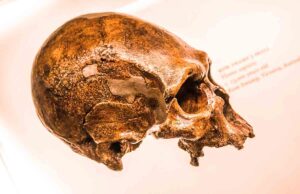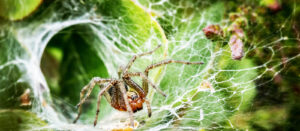The publication of The Expression of the Emotions in Man and Animals (Darwin, 1872) was the beginning of an investigative journey on the evolution of cognitive capacities. Since then, a myriad of tests have been conducted on the cognitive capacities of different species, from humans and chimpanzees to bees and octopuses, as well as paramecia.
These tests have generated two contrasting explanatory frameworks. One maintains that each cognitive capacity is associated with a particular environmental interaction, and constitutes in itself the target of an exclusive natural selection process. The other, however, maintains that the target is a single general capacity that is used in various interactions with the environment. Regardless of the explanation they support, in most studies on the evolution of cognition both hypotheses depart from the assumption that cognitive capacities require random genetic mutations to occur; therefore, they refer to neuronal processes inherited by genetic means. Many researchers of the evolution of cognition are concerned with finding evidence to support either of these two hypotheses.
From my point of view, however, the fact that mutations have appeared at certain moments in evolution, and precisely in the species that need them, generates great suspicion. For this reason, for some years now I have been searching for a satisfactory explanation. So far, I have found two arguments that, together, seem to constitute the way forward to find it.
The evolution of cognition could be linked to the selection of the length of time in which brains can keep available reservoirs of undifferentiated stem cells, so that, through the interaction of the individual with the environment (for example, by means of social and asocial learning), these cells can differentiate and form new cognitive systems.
Birds and mammals begin their development from a single cell, as is the case for all multicellular organisms. Then a process of division begins, culminating in the formation of two cells, each of which in turn must divide and form two other cells, and so on. In adulthood, humans reach a figure of about 37.2 trillion cells (Bianconi et al., 2013).
Although ultimately all the cells in the body of these animals come from one original cell, they are not all the same. Many are physiologically differentiated into cell types, such as epithelial, osteoblast, leukocyte, neuron, cone, or hepatocyte, among many others. The outcome of cell differentiation is determined by the position and connection to other cells. The process of differentiation is irreversible. However, not all cells are differentiated. Some cells divide while being undifferentiated and generate both undifferentiated cells and cells that will differentiate. These are the so-called stem cells. The ratio of stem cells to differentiated cells changes during development. At the beginning of life, for example in the morula state, there are more stem cells than differentiated cells. Later, however, this ratio is reversed. In adult vertebrates, there are stem cells in practically all tissues. Neuronal stem cells in the adult brain of birds and mammals have different origins and, depending on their location as well as the time of their division, can generate different types of neurons; furthermore, these cells are in different stages of a continuum that goes from quiescence, through activation and ending in differentiation, as it happens, for instance, in learning processes (Obernier and Alvarez-Buylla, 2019).
The publication of The Expression of the Emotions in Man and Animals (Darwin, 1872) was the beginning of an investigative journey on the evolution of cognitive capacities.
In his book Ontogeny and Phylogeny, the great paleontologist Stephen Jay Gould argued that the evolution of human cognition could be linked to the evolution of ontogeny, either with the appearance of new traits by mutation, or by heterochrony, which is the temporal adjustment of existing traits (Gould, 1977:4). This is equivalent to maintaining that the processes of heterochrony are as important for evolution as are, in fact, random genetic mutations. These processes are classified into ‘paedomorphosis’ or ‘peramorphosis’ of a trait of the descendant species compared to that trait in the ancestor species. Paedomorphosis is the retention of the ancestral infant trait in the adult descendant, and can occur through progenesis, neoteny, and postdisplacement; in contrast, peramorphosis is the exaggeration of the ancestral adult trait in the adult descendant, and occurs through hypermorphosis, acceleration, and pre-displacement (Gelambi, 2020). Gould and other authors have shown that human beings have diverse neotenic morphological traits. That is, that adult humans have certain traits that our ancestors’ infants had thanks to the relative delay of our development.
As conclusion, I could mention that a hypothesis can be glimpsed from the conjunction of the argument about brain changes in the proportion between undifferentiated and differentiated cells during development and the argument about the evolution of development through heterochrony: the evolution of cognition could be linked to the selection of the length of time in which brains can keep available reservoirs of undifferentiated stem cells, so that, through the interaction of the individual with the environment (for example, by means of social and asocial learning), these cells can differentiate and form new cognitive systems.
In his book Ontogeny and Phylogeny, the great paleontologist Stephen Jay Gould argued that the evolution of human cognition could be linked to the evolution of ontogeny, either with the appearance of new traits by mutation, or by heterochrony, which is the temporal adjustment of existing traits.
References:
Bianconi, E., Piovesan, A., Facchin, F., Beraudi, A., Casadei, R., Frabetti, F., … & Perez-Amodio, S. (2013). An estimation of the number of cells in the human body. Annals of Human Biology, 40(6), 463-471.
Darwin, C. (1872). The expression of the emotions in man and animals. Londres: John Murray. http://darwin-online.org.uk/converted/pdf/1872_Expression_F1142.pdf [consultado el 23 sep 2020]
Gelambi, M. (2020). Heterocronias: peramorfosis y pedomorfosis (con ejemplos). Lifeder. https://www.lifeder.com/heterocronias/ [consultado el 22 de septiembre de 2020]
Gould, S. J. (1977). Ontogeny and phylogeny. Harvard: Harvard University Press.
Obernier, K., & Alvarez-Buylla, A. (2019). Neural stem cells: origin, heterogeneity and regulation in the adult mammalian brain. Development, 146(4).
Studied Biology at the UAM-X and completed postgraduate degrees in Anthropology at the UNAM. She is dedicated to research on the evolution of cognition at the Ethology Department of the INPRFM and to teaching on the topics of Primatological Anthropology, Evolutionary Analysis of Behavior and Evolutionary aspects of Human Sexuality at the ENAH and the UNAM.


